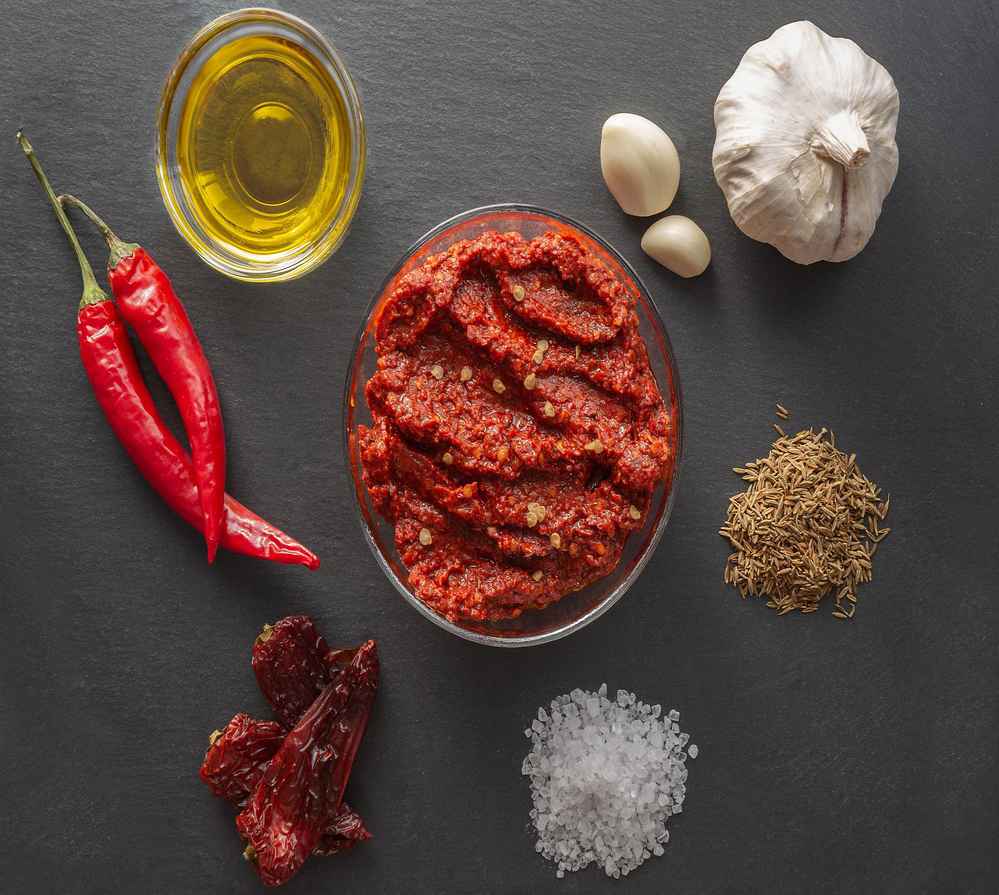If you’ve ever stared blankly into the cupboard at seven o’clock on a Wednesday evening, you’ll know the sinking feeling: a row of dusty spice jars, each containing exactly one teaspoon less than a recipe calls for. By the time you’ve measured, chopped, toasted, and blended, the enthusiasm for dinner has collapsed into thoughts of toast.
Enter the humble homemade spice paste. Not the shop-bought tubes that taste vaguely of vinegar, but jars of flavour you can build yourself and keep ready in the fridge. They’re the secret handshake of good weeknight cooking: an easy curry base to save you from takeaway menus, a punchy harissa recipe that perks up veg, or a za’atar marinade that makes chicken taste like it came from somewhere far more glamorous than your grill pan.
Why Turn Spices Into Pastes?
Because spices are at their most charming when given a bit of oil and company. Left alone in jars, they fade. Mixed into a paste with garlic, lemon, or onion, they stay vibrant and spread evenly through food. Oil acts like a bodyguard, keeping air out and flavour in.
There’s also the small matter of laziness. A spoonful of paste is infinitely easier than rummaging for six spice jars while the onions threaten to burn. It’s cooking insurance, or call it meal prep for busy cooks.
The General Formula
Almost every paste, no matter the cuisine, follows a similar outline:
-
Dry spices – roasted or freshly ground.
-
Aromatics – garlic, onion, ginger, chillies if you like them.
-
Something sharp – lemon, lime, vinegar, tamarind.
-
Oil – olive, sunflower, or whatever’s friendly with your chosen flavours.
Everything goes into a blender, and out comes a smooth, fragrant paste. Simple.
Three Pastes Worth Keeping on Hand
1. Harissa
A fiery North African blend that perks up couscous, grilled veg, or even a fried egg.
-
Soaked dried chillies, cumin, coriander, caraway.
-
Garlic and roasted red peppers.
-
Olive oil and lemon juice.
Blend until thick and red, then cover with a drizzle of oil in the jar. This harissa recipe is especially good spread under cheese on toast for a quick, spicy snack.
2. Curry Base
The all-rounder. Build almost any curry—or cheat your way to something resembling one—just by starting here.
-
Onions (cooked until soft), garlic, ginger.
-
Ground coriander, cumin, turmeric, and chillies if you want heat.
-
Tomatoes, blended in for body.
This easy curry base benefits from a quick simmer before storing, to mellow the onions. Spoon it into ice cube trays if you want neat little portions ready to toss into a hot pan.
3. Za’atar Marinade
Usually a dry spice mix, but much more versatile when you turn it into paste.
-
Za’atar blend (thyme, sesame, sumac).
-
Garlic, lemon juice, olive oil.
-
Optional: yoghurt for creaminess.
Brush this za’atar marinade over chicken, toss it with roast potatoes, or smear it on flatbread before baking.
Keeping Them Fresh
Here’s where the science bit sneaks in.
-
Use clean, sterilised jars. A quick boil in water or a dishwasher cycle works.
-
Always smooth a layer of oil across the top of the paste. It keeps out oxygen.
-
Store in the fridge for up to three weeks.
-
Or freeze in small portions for several months.
The freezer method is especially handy—imagine a bag of little flavour bombs waiting to be dropped into a pan of beans or soup.
How They Make Life Easier
You get home late. The fridge holds one zucchini, half a block of tofu, and eggs. Normally, this ends with toast or cereal. But if you’ve got curry paste, dinner suddenly looks respectable: stir-fry the tofu, add a spoon of paste, splash in coconut milk. Done.
Or it’s barbecue season, and instead of fussing with marinades, you just paint za’atar paste onto skewers. Guests think you’ve worked hard; really, you worked smart last Sunday when you blended the batch.
Spice pastes are less about culinary brilliance and more about looking after your tired, hungry future self.
Beyond the Basics
Once you get into the habit, it’s hard to stop. Green curry paste (lemongrass, coriander, galangal), chimichurri paste (parsley, garlic, vinegar), or a ginger-scallion paste to drizzle over noodles. You’ll start inventing your own, tailored to what you actually cook.
The beauty of these homemade spice pastes is that they travel across cuisines without fuss. A spoon of harissa in lentil soup, a smear of za’atar on roasted aubergine, or curry cubes keeping weeknights interesting.
Final Word
Making spice pastes is like writing a love letter to your future appetite. It doesn’t take long, but it pays back every time you’re too tired to chop, measure, and toast. Build a few jars, tuck them into your fridge or freezer, and let them be the small act of kindness that rescues your weekday dinners.
Image from Pixabay.

